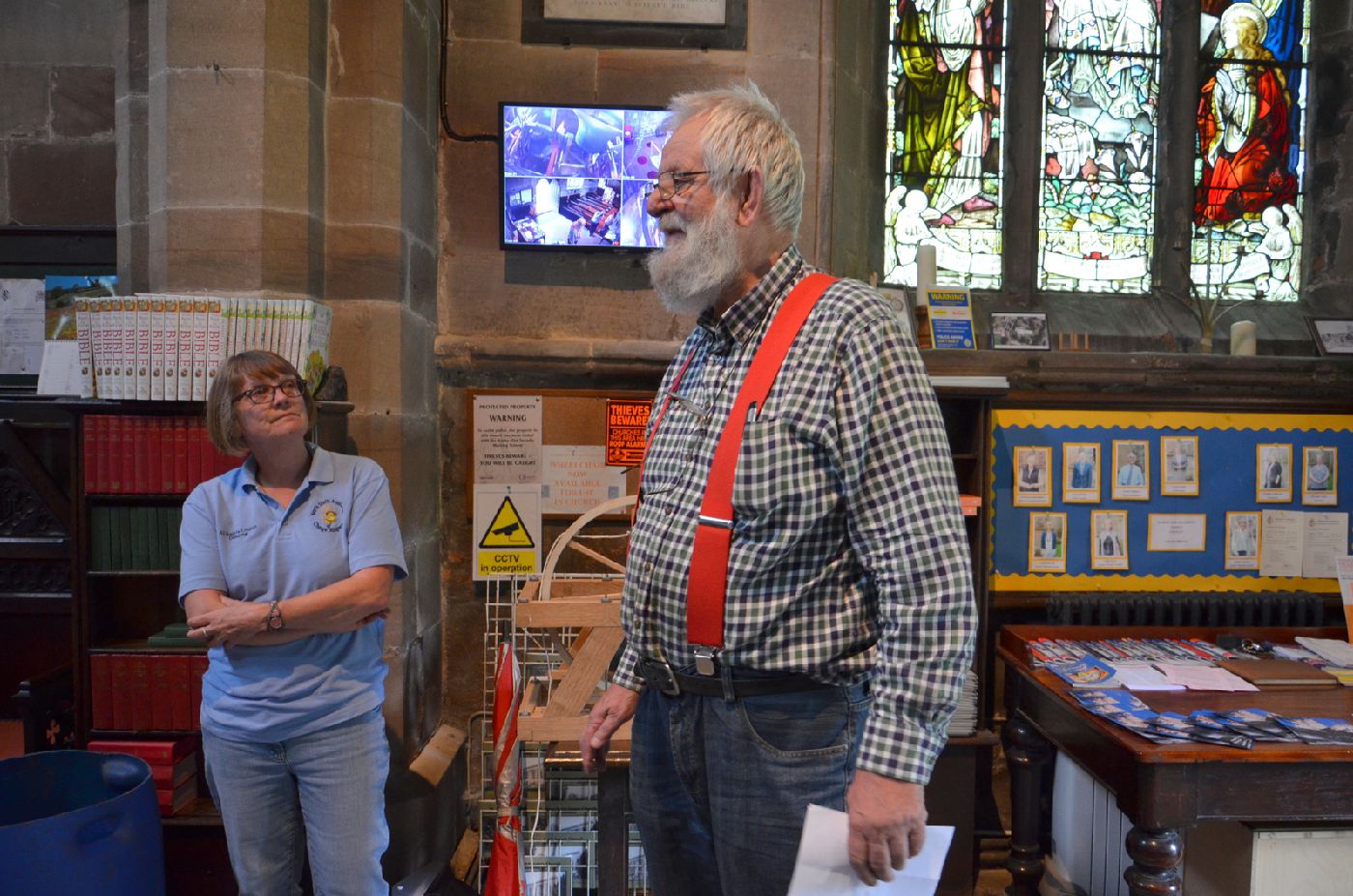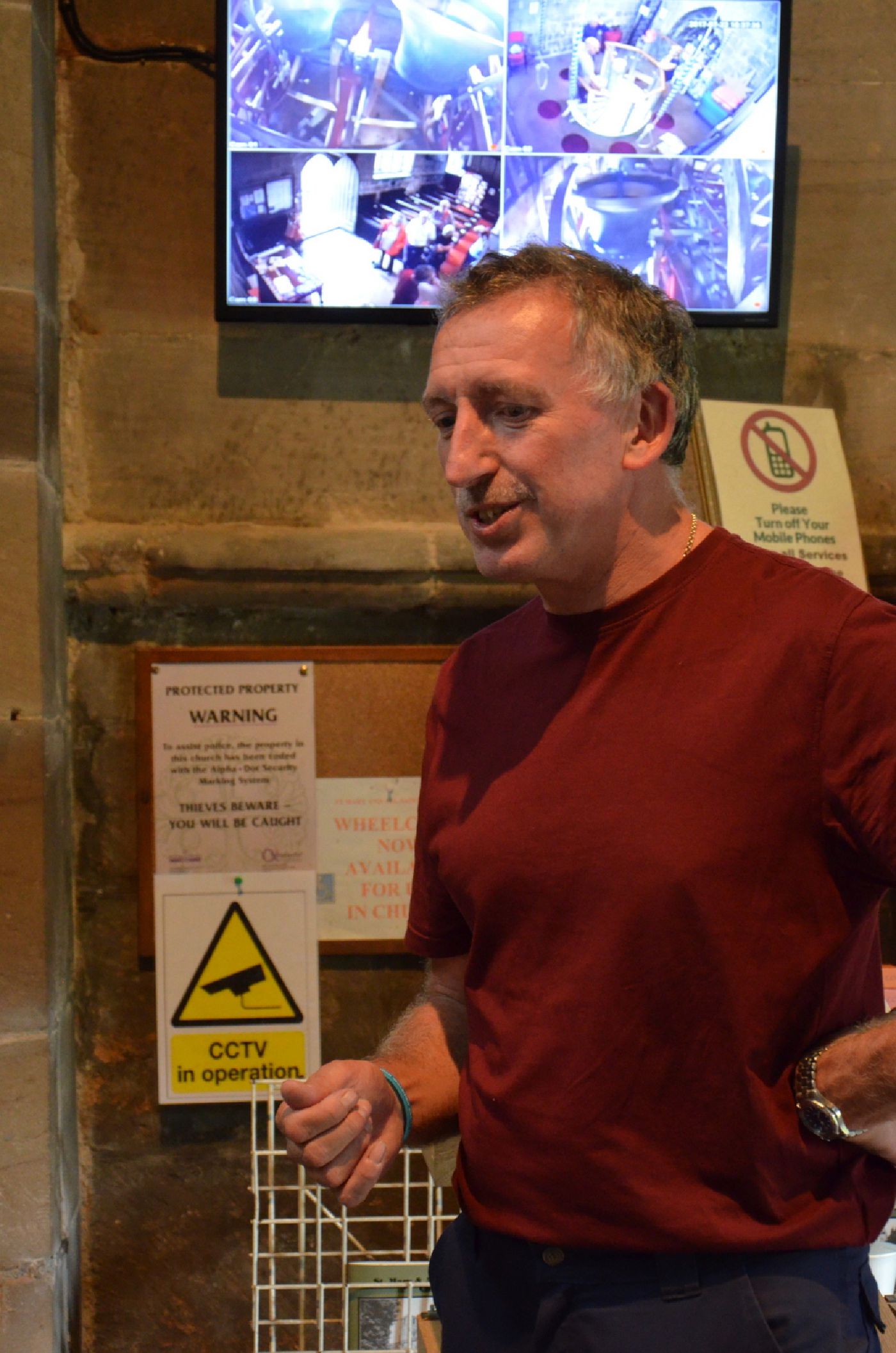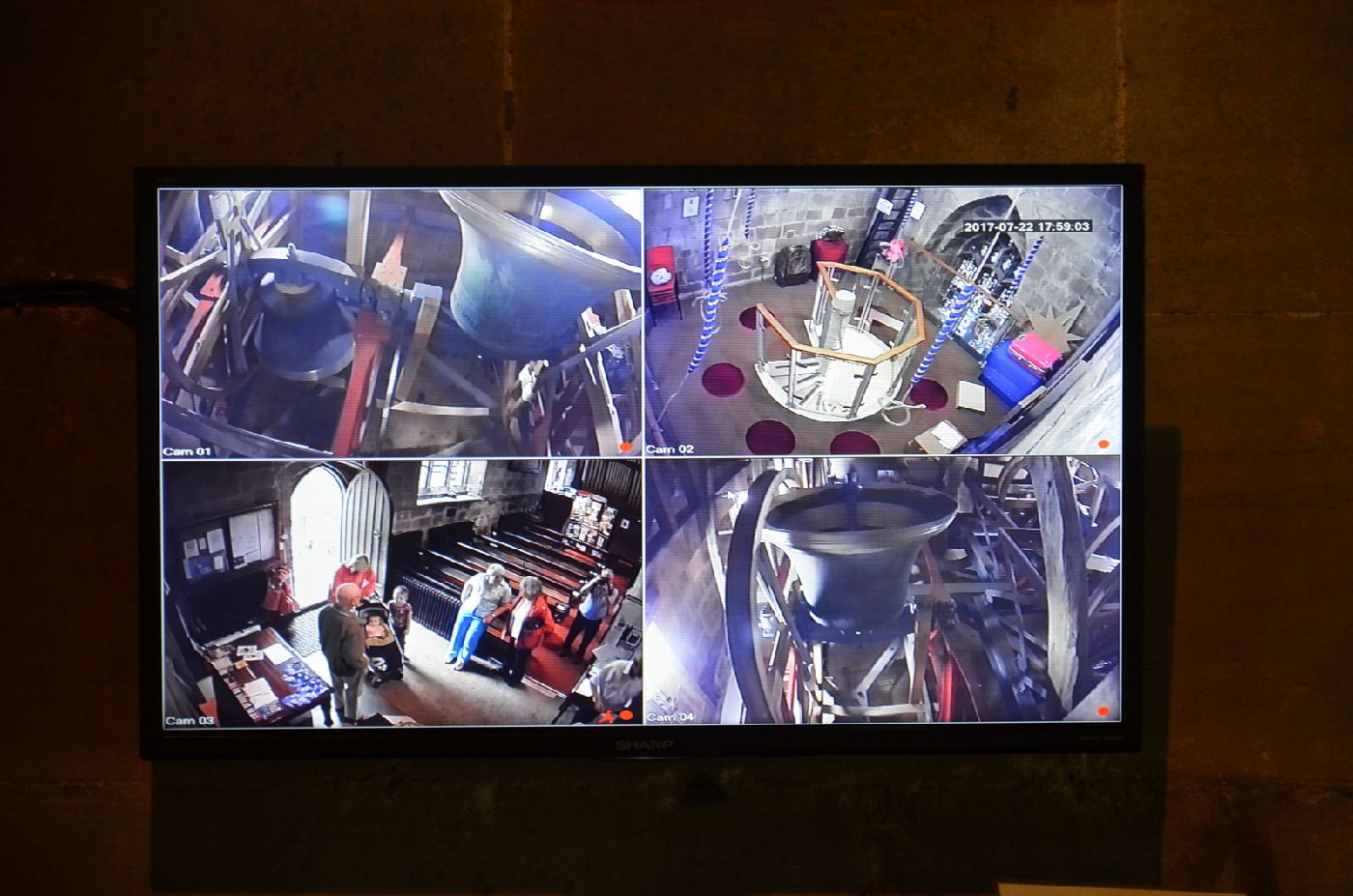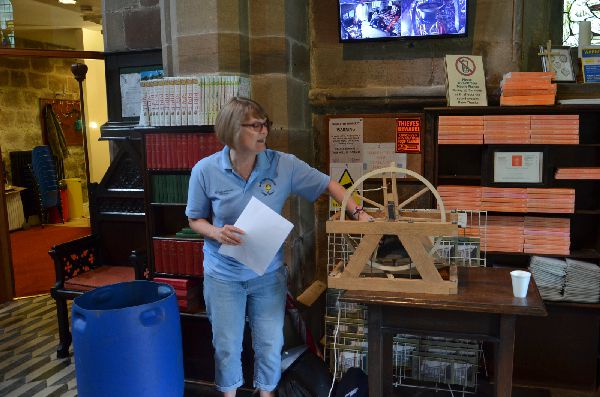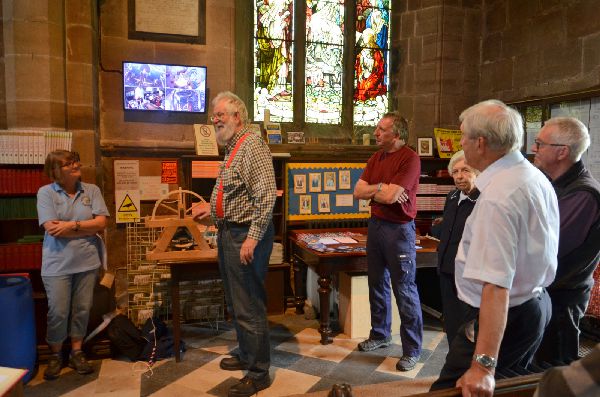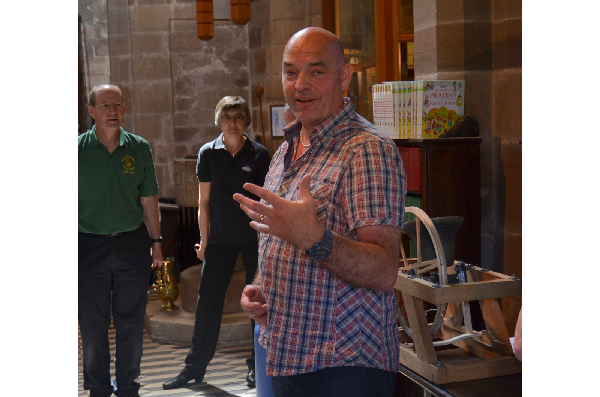Phil Gay and Ros Daybell from the Staffordshire Association of Change Ringers explained the principals behind bell ringing.
They explained that in the 14th Century before the reign of Henry VIII and the Protestant Reformation, most bells in churches and monasteries were hung on a simple spindle and chimed by Deacons pulling a rope.
A little later the ringers began to experiment with new ways of hanging the bell to get greater control. The first improvement was mounting bell to quarter wheel with a spindle serving as the axel and the rope attached to the rim of the wheel. As this method grew popular, bells then began to be mounted on half wheels. Following the Reformation, many churches began to rehang bells, with most using the new technology of bells mounted on a whole wheel. This gave much greater control using the rope, but the final refinement was a stay and slider to be able to ‘set’ the bell. The ringer could now rotate the bells 360 degrees and stop and start the ringing at will.
